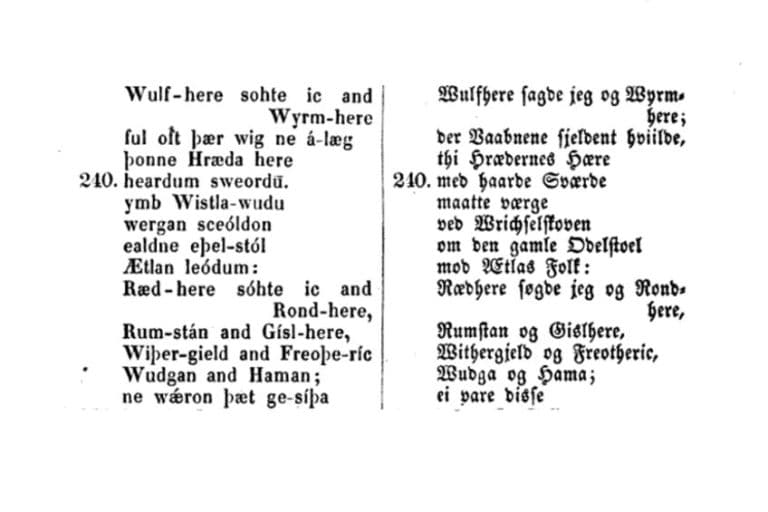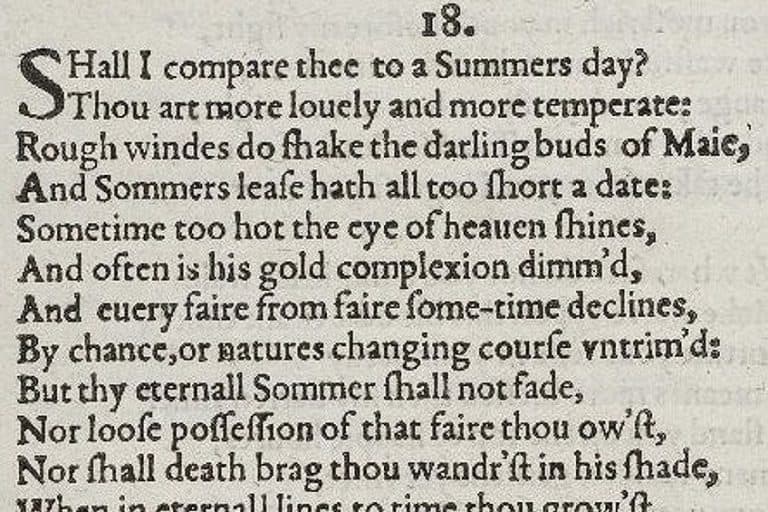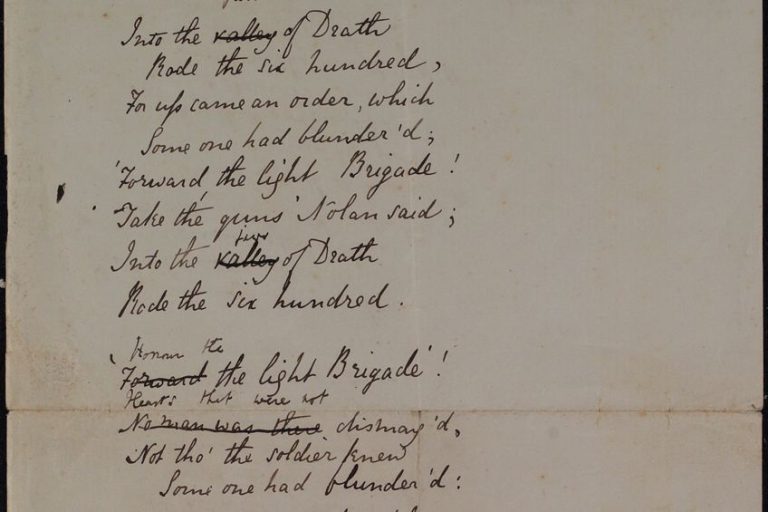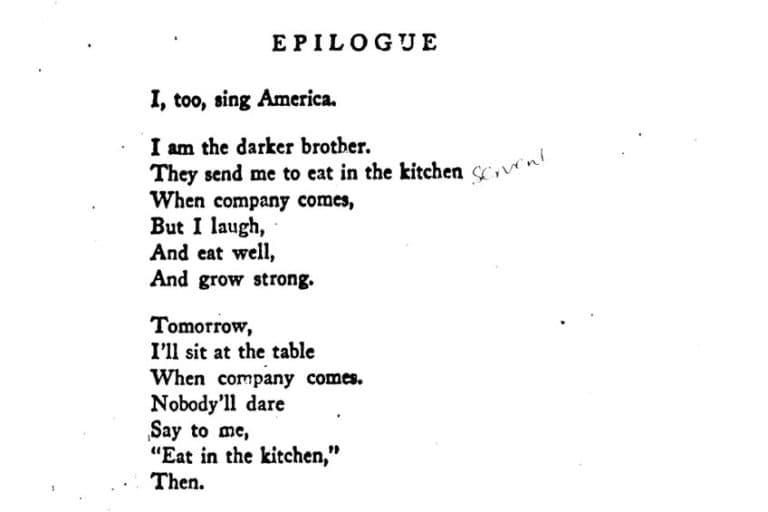Third-Person Objective – An Important Narrative Perspective
When we tell stories, we need a particular perspective from which to tell said story. The third-person perspective is one of the preferred methods for the conveyance of a narrative. However, we are going to examine the third-person objective perspective, which is a type of the types of third-person point of view. We will discuss this type of narration, the differences between it and the other types, the characteristics of this variety, and, lastly, a few third-person objective examples to top it all off. If this is your kind of thing, keep reading!
A Look at the Third-Person Objective Point of View
There are many different third-person point-of-view texts out there in the world. However, the third-person objective point of view is a particularly interesting one. We will soon have a look at the specifics of this form, but it is likely best to first state the differences between the third-person point of view in general and the first-person perspective.

The former of these two types refers to a narration style that is detached from the characters in the narrative. It uses they/he/she to discuss what the characters are doing. For instance, it will state that “She went to the shops”. The first-person perspective, on the other hand, uses the personal pronoun, and so it will instead read as “I went to the shops”. However, we are going to look at the least common of the third-person point-of-view varieties.
The basic idea behind this particular type is that it allows for a more “fly on the wall” approach to narrative storytelling. However, we will have a far more depth examination of this in the subsequent article. Before we get to any of that though, let’s first quickly examine a summary of the third-person objective perspective before we proceed with a more in-depth discussion of this narration technique.
Summary of the Third-Person Objective Point of View
This is our short summary of the third-person objective point of view for those who may not have time to parse their way through an entire article. This should give a good general overview of the concept, but you’ll have to keep reading if you want to learn a lot more about this less common variety of third-person point-of-view narration:
- The third-person objective perspective is highly limited. The idea behind this type of a third-person point of view is that it does not show the inner lives of the characters that it narrates. Instead, it only objectively shows the world and describes what is happening. It allows the reader to try and understand. This is why it could be seen as the epitome of the show don’t tell approach to writing.
- The third-person objective perspective is one type of third-person point of view. The other instances of third-person point-of-view narratives include third-person omniscient and third-person limited perspectives. These other varieties tend to allow for far more introspective depictions of the characters found in the text that make use of this perspective.
- The third-person objective perspective is not very common. While third-person point-of-view narratives are very common, the same is not necessarily true of the subset known as the third-person objective This is generally because there is less creative freedom when writing from this perspective.
This has been our brief look at a summary of the third-person objective perspective. However, if you want to learn significantly more about the third-person objective perspective, keep reading on.
If you want an answer to a question such as, “What is third-person objective?”, it will be answered more comprehensively in the sections to follow.
A Definition of the Third-Person Point of View
When it comes to perspectives, there are many to choose from when someone writes a story. The third-person objective perspective is one of those perspectives, and like all examples of the third-person point of view, it makes use of a more detached style in which words like he/she/they are used instead of it being focused around the personal I-pronoun. However, in terms of the specifics of the third-person objective perspective, it is a style that is more objective in its presentation than the other third-person points of view.
It is the least common of them all because we often instinctually write a narrator who has some level of understanding of what is happening, but the idea behind the third-person objective perspective is that it is the epitome, or height, of the “show don’t tell” idea that can often be found in many examples of writing. The narrator never tells us what they are thinking and instead objectively reports on the events that are occurring.

This is why this perspective is often seen as a “fly on the wall” type of approach to narration. The idea is that we want to show a story of some kind without the narrator chiming in or telling us what any of the characters are thinking. In this sense, it has a more journalistic style to it. Only report on the events, don’t give your opinions on them! And as an example of the third-person point of view, it is often seen as the opposite of the first-person perspective.
In terms of a story in the first-person rather than the third, it is a story that will present us the story from within the mind of a character rather than standing outside of them. There is also such a thing as the second-person perspective, but that is a very uncommon type of writing and is hardly ever seen outside of very short narratives, such as flash fiction and some longer short stories. However, the third-person objective perspective is only one of the principal types of third-person points of view.
So, we should have a look at some of those other types of third-person perspectives to see how they differ and how they are similar to the third-person objective perspective.
Differences Between Types of Third-Person Points of View
The main similarities between the different types of third-person perspectives are that they are all outside of the character. They all use detached pronouns, like he/she/they rather than I/me/myself. However, the differences between the different types are more nuanced and run along a kind of spectrum from immensely journalistic to omniscient.
Let’s start on the more journalistic side of things. This is the primary thrust of this article, after all. The third-person objective perspective is one that wants to be as detached as possible. It wants to tell us nothing at all about the thoughts and feelings of those who are within the story. It is the height of the previously mentioned “show don’t tell” perspective. So, what about the other two primary examples of third-person points of view?

The next on the spectrum is the third-person limited perspective. This is the type of third-person narration in which the narrator generally only follows one character at a time and we are able to read their thoughts and feelings. However, we are not privy to the thoughts of other characters. It is as if we have special insight into only one character. This is likely the most common of them all because it allows us to have a very firm idea of who the protagonist is and their perspective on what is happening in the story.
Lastly, there is the third-person omniscient perspective. This is a narrator who has access to all the information in a narrative. They don’t simply report on what is seen by a casual observer, such as with the third-person objective perspective, but they also tell us what all sorts of characters are thinking. It can often jump between multiple characters to show us each of their perspectives on a variety of topics.
This is a style of narration that allows for a much broader understanding of the story being told, but it is likely not as commonly seen as the third-person limited perspective.
These are the primary types of third-person points of view, but there are also other varieties. However, as our focus here is predominantly on the third-person objective perspective, we will not be looking at those examples today. This should give a good overview of the different types of third-person perspectives and how they relate to the primary topic of conversation today: the third-person objective perspective.
Characteristics of the Third-Person Objective Point of View
The primary characteristics of the third-person objective perspective is that it has a neutral and observational perspective that limits the amount of information the reader is given at any one time. This is why it is such a fantastic example of the “show don’t tell” mentality in a lot of prose writing. Like all perspectives, there are advantages and disadvantages to this kind of approach.
If we were to write something that was, for instance, a mystery, we may only want a very limited perspective. We don’t want the killer in a whodunit to also have a voice in the narration. Imagine if the people the detective interviewed all thought, for us to hear, that they were either innocent or guilty. That would be terrible! So, limiting the information we are given as the audience is a fantastic way to keep the reader on their feet.

On the other hand, characterization can suffer in a story that makes use of the third-person objective perspective because we cannot dive into what the character is thinking at any point in time. We do not know their perspective and so we may not be able to relate to them in a way that aids us in coming to terms with what they think or do.
These are some of the primary characteristics of the third-person objective perspective alongside some of the ups and downs of this style of narration. Every type of narration is chosen for a specific reason, and the third-person objective perspective is one to choose if you want to go very hard on the idea of “show don’t tell”.
Third-Person Objective Examples
There are so many different examples of third-person point-of-view narration in general, but some of the other types of third-person narration that have been discussed are far more common than this particular type of perspective. So, what is third-person objective and how is it used in actual instances of literary texts? This is why we need to have a look at a few third-person objective examples to help illustrate the concept.
We are going to examine two different instances of this particular type of narration to help us understand it.
The Rise of Pancho Villa (1913) by John Reed
| Date Published | 1913 |
| Type of Text | Non-fiction |
| Genre | Biography |
| Topic | Rise of General Francisco ‘Pancho’ Villa |
The Rise of Pancho Villa is not a work of fiction or poetry and is instead an example of non-fiction. In this particular case, it is a biography of the life of Francisco “Pancho” Villa, who was a general during the Mexican Revolutionary War. In this text, the writer makes use of a third-person objective style of writing by simply stating the facts and observing the life of this revolutionary figure. The writer also wrote this book after seeing Pancho Villa in action, and so it is told from a more personal, yet observational, perspective.

This style of writing is particularly beneficial when writing non-fiction work because it gives an air of objectivity to the proceedings. By simply following this figure and describing what is seen and done, the narrator is able to be that metaphorical fly on the wall. The reader of a book about an important historical figure like this is not likely to be interested in the feelings of the writer, but instead in the actions of the subject.
So, it makes complete sense why this would be a great third-person objective example.
Hills like White Elephants (1927) by Ernest Hemingway
| Date Published | 1927 |
| Type of Text | Short story |
| Genre | Conversational |
| Topic | Metaphorical discussion |
Hills like White Elephants is one of the best-known examples of the third-person objective perspective. It is a short story by one of the most famous American Modernist writers, and it is the story of a man and a young woman who meet one another at a train station. They discuss the nearby hills that look like white elephants, and many interpret this story as the tale of an unwanted pregnancy. The story never explicitly states this, but it is often seen as a veiled discussion of abortion.

The reason that the third-person objective perspective is so perfect for this interaction is because the story is there to show us the conversation between these two people. There is no need for the narrator to give their interpretation of what is happening, and we are instead expected to see and understand what is being said and shown between these two figures in a very “show don’t tell” way. This text has become one of the go-to third-person objective examples in literature.
And with that last instance of our third-person objective examples, we have come to the close of our examination of this particular type of the third-person point of view. We have had a look at a definition of the third-person objective perspective, how it differs from other types of third-person perspectives, what its characteristics are, and two different third-person objective examples. This has not been a comprehensive examination of all the different examples of this type of third-person point of view, and there are many other texts that make use of it. So, if you wish to find some of those, have a look at see what you can find!
Frequently Asked Questions
What Is Third-Person Objective Perspective?
The third-person perspective includes a number of different types, and the third-person objective point of view is likely the least common one. The reason for this is that this form of narration does not incorporate the thoughts and feelings of the characters that are being narrated. Instead, it simply recounts what is happening without attempting to ascribe anything to the characters in question. The different types of third-person point-of-view styles show some insight into what characters are thinking.
What Are the Different Types of Third-Person Perspectives?
When it comes to the third-person point of view in literature, there are usually three principal types to choose from. We have discussed and examined the third-person objective perspective over the course of this article. However, the others include the third-person omniscient and third-person limited perspectives. These two refer to types of narration that look deeply into the characters and the world and know everything that happens around them, while the latter refers to a type of narration that knows some information but generally remains rooted behind a single character.
What Are the Characteristics of Third-Person Objective?
One of the strongest aspects of the third-person objective perspective is that it is a very neutral way of expressing a narrative. It is highly observational, does not ascribe anything onto characters, and is fundamentally limited. This allows it to provide us with the kinds of narratives that may require additional character analysis and interpretation.
What Is the Difference Between First and Third-Person Perspectives?
When it comes to these two incredibly broad types of perspectives in narratives, it is easy to tell one from the other. When it comes to the first-person perspective, we are hearing the story straight from the horse’s mouth, so to speak. The text will use I pronouns, such as saying something like I went to the shop. The third-person point of view instead makes use of they/he/she. So, it instead becomes They go to the shops. There is also second-person narration, but it is far less common than either of these other two types of narration.
What Are Some of the Most Famous Third-Person Objective Examples?
This type of third-person point of view is not as common as some of the other types of third-person narration, and so it is often harder to find third-person objective examples out there. However, some of the most notable include texts like Hills like White Elephants (1927) by Ernest Hemingway, and The Rise of Pancho Villa (1913) by John Reed. There are more third-person objective examples out there, but you’d likely have to go looking for them if you really want to find them.
Justin van Huyssteen is a freelance writer, novelist, and academic originally from Cape Town, South Africa. At present, he has a bachelor’s degree in English and literary theory and an honor’s degree in literary theory. He is currently working towards his master’s degree in literary theory with a focus on animal studies, critical theory, and semiotics within literature. As a novelist and freelancer, he often writes under the pen name L.C. Lupus.
Justin’s preferred literary movements include modern and postmodern literature with literary fiction and genre fiction like sci-fi, post-apocalyptic, and horror being of particular interest. His academia extends to his interest in prose and narratology. He enjoys analyzing a variety of mediums through a literary lens, such as graphic novels, film, and video games.
Justin is working for artincontext.org as an author and content writer since 2022. He is responsible for all blog posts about architecture, literature and poetry.
Learn more about Justin van Huyssteen and the Art in Context Team.
Cite this Article
Justin, van Huyssteen, “Third-Person Objective – An Important Narrative Perspective.” Art in Context. November 30, 2023. URL: https://artincontext.org/third-person-objective/
van Huyssteen, J. (2023, 30 November). Third-Person Objective – An Important Narrative Perspective. Art in Context. https://artincontext.org/third-person-objective/
van Huyssteen, Justin. “Third-Person Objective – An Important Narrative Perspective.” Art in Context, November 30, 2023. https://artincontext.org/third-person-objective/.









